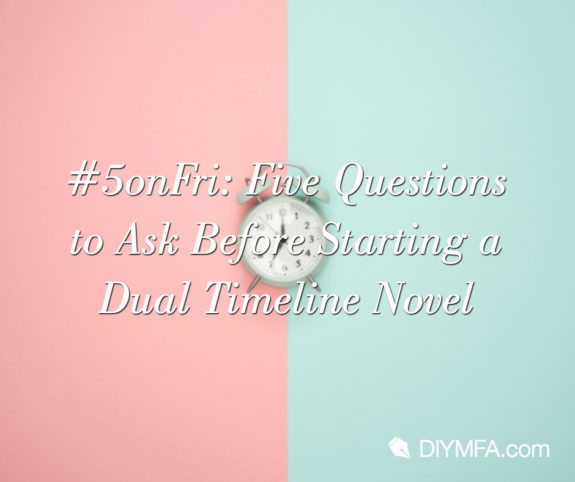I don’t know how other authors of dual timeline novels decided to go that way, but this structure wasn’t my initial intention. I had an idea for a story about a young woman in seventeenth-century Spain, but I eventually realized that I couldn’t let her story begin and end there. I wanted there to be a modern character who would learn about that young woman, and who would be changed by the discovery.
Of course, there is a lot of variety in how authors tackle a dual timeline novel, but if you want to explore that option, here are some questions you might want to ask yourself.
1. Is a dual timeline novel for me?
Give this one careful thought. There are definitely some complications inherent in writing this type of work. Don’t think that it will help fill a possible hole in your story line. A dual timeline is not a substitute for plot. Indeed, in a sense there are two plots, which must work in tandem to create a cohesive whole. It is crucial to remember that each timeline must be engaging on its own. You will lose your reader if one period is only a crutch for the other.
This can be a satisfying structure, though, if you find that connecting the story to another time period, and thus to other characters, will enhance the narrative, adding depth to each storyline as it is viewed from the perspective of the other.
2. How will I structure my novel?
There are some works which feature the same people in two different time periods, offering a back and forth of how events in the past shaped the current actions and circumstances in the present. However, it is much more common to feature different characters set apart by decades or even centuries. In this case, the later time period is usually relatively contemporary.
Most dual timeline novels switch back and forth between past and present, although some start with a significant section in the past, and only then begin to reveal the relevance to the present. This might also be done in reverse. However you do it, remember that it must always be immediately clear in which timeline the narrative is happening, or the reader will become disoriented and lose interest. Often time period changes will happen in new chapters, so a chapter title effectively alerts the reader.
3. What is the path into a dual timeline?
There must be something that ties the two timelines together. How does the modern figure know about the past, and how much does she know? Has she found some piece of writing—a diary, a letter, a document? Has she found a picture or an object that will lead to speculation? How will the contemporary character proceed? In dual timeline novels there is almost always a mystery to be solved.
4. How much will the contemporary character, and the reader, know about what happens in the earlier time period?
Once the initial discovery has taken place, the present-day protagonist does some digging, slowly revealing more of the past. In some novels, the reader will only know about what is thus uncovered, and no more.
In some cases, though, the reader knows more about the historical character than does the present-day one. There are scenes from the former period that only the reader is privy to. In this way the reader can become more invested and root for the contemporary counterpart in the quest to find the truth. It can even be that the reader knows things that the more recent character will never learn, and this can add a certain poignance, a reminder that one can never fully understand the past.
5. How will I keep my reader engaged in a dual timeline?
There must be some conflict, something the protagonist needs, in both the past and the present. The historical character must have some obstacle to deal with, and whether or not they succeed in this will be left to the contemporary person to unearth. The modern figure may be motivated by mere curiosity to begin with, but the urgency to find an answer should build as the novel proceeds.
The revelation about the past can range from the unveiling of a family secret to the disclosure of a previously unknown or misunderstood fact. Whatever that discovery is, it must have been something that had significance in the past, and some emotional repercussion in the present.
If you decide that you do want to write a dual timeline novel, think about incorporating some of the ways mentioned here to connect the two periods and characters. You don’t want your beta readers or your developmental editor to come back to you and say that you have halves of two different novels!

Rebecca D’Harlingue’s award-winning debut novel, The Lines Between Us, is about a young woman who flees 1661 Madrid, and a woman in 1992 St. Louis who uncovers her diary among her mother’s things. Currently Rebecca is doing research for her next novel, which will take place in 1660s Amsterdam. Rebecca is a member of the Paper Lantern Writers author collective. You can find out more about her and about the novel on her website. Follow her on Instagram, and check out Facebook for more information on her book.







